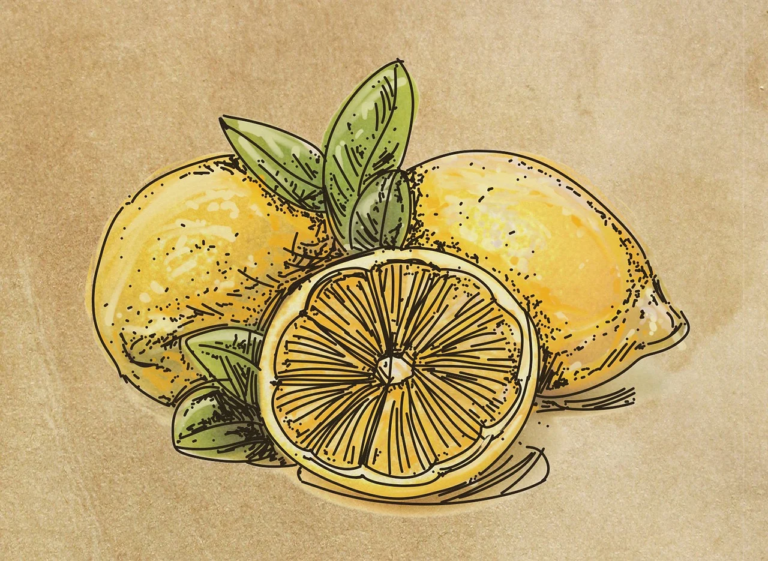Lemon, a citrus fruit native to the Mediterranean climate, loves the sun and offers refreshing and delicious fruits. However, proper watering techniques are crucial for the healthy and productive growth of this delicate tree. Correct watering not only enhances fruit quality but also ensures the tree’s longevity. In this article, I’ll share the techniques and tips you need to keep in mind when watering lemon trees.
What Are the Water Requirements for Lemon Trees?

Lemon trees need more water compared to other fruit trees. Their water needs increase especially during the growth and fruiting periods. Lemon trees that do not receive enough water will shed their leaves, produce small fruits, and are at risk of drying out over time. However, overwatering can also lead to root rot and other diseases. Therefore, adopting a balanced watering regime is essential.
Watering Frequency and Timing

The watering frequency for lemon trees depends on the tree’s age, size, and weather conditions. Young lemon saplings require more frequent watering because their roots are not yet deep. It’s important to keep the soil consistently moist, especially during the first two years. Watering 2-3 times a week may be sufficient during this period.
Mature lemon trees have deeper roots and can store water more efficiently. For a mature lemon tree, watering once a week in summer and every two weeks in winter is generally adequate. The most important point in watering timing is to do it early in the morning or late in the evening. This way, the evaporation rate is lower, and the plant uses the water more efficiently.
The Importance of Soil Structure

The depth of the lemon tree’s roots and the soil structure determine the amount of water needed. Lemon trees thrive best in well-drained, slightly acidic, and nutrient-rich soils. If the soil is heavy and clayey, water drainage becomes difficult, increasing the risk of root rot. In this case, mixing the soil with materials like sand or perlite to lighten it and improve drainage will be beneficial.
Drip Irrigation Method

One of the most ideal watering methods for lemon trees is drip irrigation. This method ensures that the water reaches the roots directly and minimizes water waste. The drip irrigation system delivers water slowly and in controlled amounts through emitters placed at specific intervals around the tree. This helps keep the soil consistently moist while preventing problems like waterlogging and root rot.
Drip irrigation is a preferred method, especially in large lemon orchards, because it saves both labor and water. When using this system, it’s important to monitor the water’s pH level and salinity. Lemon trees are sensitive to high salinity, which can negatively affect yield.
Mulching for Water Conservation

Applying organic mulch (such as straw, leaves, or wood chips) around lemon trees is highly effective for conserving soil moisture. Mulch prevents water loss from the soil, helps keep the roots cool during hot summer months, and suppresses the growth of weeds. Additionally, mulch gradually breaks down and adds organic matter to the soil, improving its structure.
When mulching, be careful not to let the mulch touch the tree trunk directly. Leave a gap of about 5-10 cm around the trunk. This gap reduces the risk of fungal diseases and allows the tree to breathe.
Water Quality and pH Balance

Sulama suyunuzun kalitesi, limon ağaçlarının sağlığı üzerinde doğrudan etkilidir. Limon ağaçları, nötr ya da hafif asidik suyu tercih eder. pH değeri 6-7 arasında olan su, limon ağaçları için idealdir. Eğer suyunuzun pH değeri yüksekse, düzenli aralıklarla asidik gübreler kullanarak dengeyi sağlayabilirsiniz.
Additionally, pay attention to the salt content in the water. High-salinity water can cause salt buildup in the roots, making it difficult for the trees to absorb water. In such cases, using alternative water sources like rainwater harvesting systems can be beneficial.
Watering During Drought Periods

During drought periods, the water needs of lemon trees increase. In such times, the frequency of watering should be increased, and drip irrigation systems should be run for longer periods. If you are not using a drip irrigation system, make sure the water reaches deep into the soil when watering with a hose.
During drought periods, the water needs of lemon trees increase. In such times, the frequency of watering should be increased, and drip irrigation systems should be run for longer periods. If you are not using a drip irrigation system, make sure the water reaches deep into the soil when watering with a hose.
Environmental Benefits of Lemon Trees

Lemon trees are not only known for their delicious fruits but also for the contributions they make to the environment. These trees provide shade for surrounding plants, helping to retain soil moisture. They also attract pollinators such as bees and butterflies, thus supporting biodiversity. The roots of lemon trees stabilize the soil, preventing erosion and contributing to the preservation of environmental balance. Moreover, these trees absorb carbon, reducing the amount of carbon dioxide in the atmosphere and producing oxygen, which is highly beneficial for the environment.


